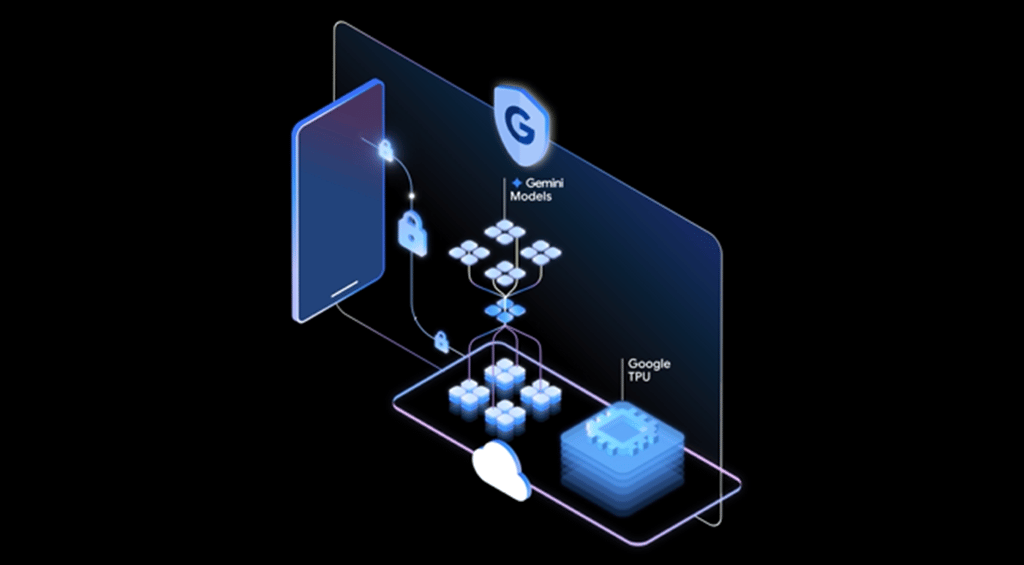Datamation content and product recommendations are
editorially independent. We may make money when you click on links
to our partners.
Learn More
In their never-ending quest to stay ahead of the competition, a growing number of enterprises are looking for ways to incorporate artificial intelligence into their applications, products, services and big data analytics. And one of the easiest and most popular ways to get started with the technology is by using cloud-based AI as a service (AIaaS) offerings.
According to IDC, worldwide spending on cognitive and AI systems is expected to increase at a compound annual growth rate (CAGR) of 50.1 percent through 2021. That means total spending on these technologies will increase from $12.0 billion in 2017 to a whopping $57.6 billion by 2021.
Cloud Storage and Backup Benefits
Protecting your company’s data is critical. Cloud storage with automated backup is scalable, flexible and provides peace of mind. Cobalt Iron’s enterprise-grade backup and recovery solution is known for its hands-free automation and reliability, at a lower cost. Cloud backup that just works.
SCHEDULE FREE CONSULT/DEMO
See our list of top artificial intelligence companies
Much of that spending will likely go to cloud-based AI services. The RightScale 2018 State of the Cloud Survey revealed that organizations are particularly interested in using cloud services related to one particular type of AI: machine learning. When survey respondents were asked which types of public cloud services they planned to use in the future, machine learning services were the number one vote-getter, with 46 percent either experimenting with the technology or planning to deploy it, despite the fact that only 12 percent are currently using those services.
Clearly, organizations are interested in AI as a service, and the cloud vendors are responding with a growing number of products.
Types of AI as a Service
There are myriads types of AI as a Service because “artificial intelligence” is a broad term that covers a wide array of technologies. At its core, AI is about creating machines that can do the same sorts of things that human brains can do. For example, AI includes computer vision technologies that can see and identify the objects in pictures. It also includes natural language processing technologies that enable systems to carry on a normal conversation, as well as machine learning technologies that allow computers to learn without being explicitly programmed.
AI as a service offerings make one or more of these types of artificial intelligence technologies available as a cloud service. Currently, the AI as a service products on the market generally fall into the following categories:
- Bots and digital assistants:For many people, the first thing that comes to mind when they hear the phrase “artificial intelligence” is a digital assistant like Apple’s Siri, Microsoft’s Cortana or Amazon’s Alexa. These tools use natural language processing technology to carry on conversations with users, and many also use machine learning to improve their skills over time. Many enterprises want to add similar functionality to their products and websites. In fact, according to IDC, the AI use case that saw the most spending in 2017 was automated customer service agents. But creating your own bot from scratch is a monumental undertaking. As an alternative, several vendors offer bot platforms as a service. Organizations train the bots with their own data and then use them to answer simple questions, freeing up human customer service agents for more complicated tasks.
- Cognitive computing APIs:An application programming interface (API) makes it easy for developers to incorporate a technology or service into the application or products they are building. The leading cloud vendors all offer an assortment of APIs for that allow developers to add a particular type of AI to their applications. For example, a developer that wants to make a photo-sharing app might use a facial recognition API to give the app the ability to identify individuals in pictures. Thanks to the API, the developer doesn’t have to write the facial recognition code from scratch or even thoroughly understand how it works. He or she uses the API to allow the app to access that functionality in the cloud. APIs are available for a wide variety of different purposes, including computer vision, computer speech, natural language processing, search, knowledge mapping, translation and emotion detection.
- Machine learning frameworks: These tools allow developers to create applications that can improve over time. Generally, they require developers or data scientists to build a model and then train that model using existing data. Machine learning frameworks are particularly popular in applications related to big data analytics, but they can be used to create many other types of applications as well. Accessing these frameworks in the cloud can be easier and less expensive than setting up your own hardware and software for machine learning tasks.
- Fully managed machine learning services: Sometimes organizations want to add machine learning capabilities to an application, but their developers or data scientists lack some of the skills or experience necessary. Fully managed machine learning services use templates, pre-built models and/or drag-and-drop development tools to simplify and expedite the process of using a machine learning framework.
The “holy grail” of AI as a service would be to create a general artificial intelligence that could be accessed as a cloud service. A general artificial intelligence is a computer system that can think and communicate in all the same ways that humans can. Most experts believe that researchers are still many years away from creating general AI, if they will ever be able to do so at all.
Benefits of AI as a Service
Some organizations, mostly very large enterprises, choose to invest in their own AI research and hardware. However, many prefer to use AI as a service because this approach offers a number of benefits, including the following:
- Advanced infrastructure: AI applications, particularly machine learning and deep learning applications, perform best on servers with multiple, very fast graphics processing units (GPUs) that run workloads in parallel. However, those systems are very expensive, putting them out of reach for many organizations and use cases. AI as a service gives organizations access to those superfast computers at a price they can afford.
- Low costs: Not only does AI as a service eliminate the need to pay for expensive hardware upfront, it also allows organizations to pay only for the time that they need that hardware. In cloud computing jargon, most AI workloads are said to be “bursty,” that is, they require a whole lot of computing power for a short period of time. AI as a service charges organizations only for what they use, lowering their costs significantly.
- Scalability: Like other types of cloud services, AI as a service makes it very easy to scale. Often organizations start with a pilot project that allows them to see how AI could be useful. With AI as a service, they can quickly move that pilot project into full production and scale up as demand grows.
- Usability: Some of the most best artificial intelligence tools are available with open source licenses, but while they are inexpensive, these open source AI tools aren’t always very easy to use. The cloud AI services generally make it easier for developers to access artificial intelligence capabilities without requiring them to be experts in the technology.
Drawbacks of AI as a Service
The two biggest drawbacks of AI as a service are two issues that are common to all cloud computing services: security and compliance.
Many AI applications — especially applications that incorporate machine learning capabilities — rely on vast quantities of data. If that data is going to reside in the cloud or be transferred to the cloud, organizations need to make sure that they have in place adequate security measures, including encryption both at rest and in transit.
In some situations, regulations may prevent some types of sensitive data from certain industries from being stored in the cloud. Other laws require that some data remains within the borders of the country where it was originated. In these cases, it may not be possible to use an AI as a service offerings for those specific use cases.
Another potential drawback is that AI as a service can be very complex. Organizations will have to invest time and effort in training and/or hiring staff with artificial intelligence and cloud computing skills. However, many organizations believe that this hurdle can be easily overcome and that AI as a service will pay off in the long run.
AI as a Service Vendors
All of the leading cloud computing vendors offer AI as a service, and some smaller vendors has cloud-based AI services as well. Here’s an overview:
Other AI as a Service Vendors
The list of additional entrants into the AI as a Service sector will certainly grow rapidly. As a start:
Oracle
Salesforce myEinstein
-
Huawei’s AI Update: Things Are Moving Faster Than We Think
FEATURE | By Rob Enderle,
December 04, 2020
-
Keeping Machine Learning Algorithms Honest in the ‘Ethics-First’ Era
ARTIFICIAL INTELLIGENCE | By Guest Author,
November 18, 2020
-
Key Trends in Chatbots and RPA
FEATURE | By Guest Author,
November 10, 2020
-
Top 10 AIOps Companies
FEATURE | By Samuel Greengard,
November 05, 2020
-
What is Text Analysis?
ARTIFICIAL INTELLIGENCE | By Guest Author,
November 02, 2020
-
How Intel’s Work With Autonomous Cars Could Redefine General Purpose AI
ARTIFICIAL INTELLIGENCE | By Rob Enderle,
October 29, 2020
-
Dell Technologies World: Weaving Together Human And Machine Interaction For AI And Robotics
ARTIFICIAL INTELLIGENCE | By Rob Enderle,
October 23, 2020
-
The Super Moderator, or How IBM Project Debater Could Save Social Media
FEATURE | By Rob Enderle,
October 16, 2020
-
Top 10 Chatbot Platforms
FEATURE | By Cynthia Harvey,
October 07, 2020
-
Finding a Career Path in AI
ARTIFICIAL INTELLIGENCE | By Guest Author,
October 05, 2020
-
CIOs Discuss the Promise of AI and Data Science
FEATURE | By Guest Author,
September 25, 2020
-
Microsoft Is Building An AI Product That Could Predict The Future
FEATURE | By Rob Enderle,
September 25, 2020
-
Top 10 Machine Learning Companies 2020
FEATURE | By Cynthia Harvey,
September 22, 2020
-
NVIDIA and ARM: Massively Changing The AI Landscape
ARTIFICIAL INTELLIGENCE | By Rob Enderle,
September 18, 2020
-
Continuous Intelligence: Expert Discussion [Video and Podcast]
ARTIFICIAL INTELLIGENCE | By James Maguire,
September 14, 2020
-
Artificial Intelligence: Governance and Ethics [Video]
ARTIFICIAL INTELLIGENCE | By James Maguire,
September 13, 2020
-
IBM Watson At The US Open: Showcasing The Power Of A Mature Enterprise-Class AI
FEATURE | By Rob Enderle,
September 11, 2020
-
Artificial Intelligence: Perception vs. Reality
FEATURE | By James Maguire,
September 09, 2020
-
Anticipating The Coming Wave Of AI Enhanced PCs
FEATURE | By Rob Enderle,
September 05, 2020
-
The Critical Nature Of IBM’s NLP (Natural Language Processing) Effort
ARTIFICIAL INTELLIGENCE | By Rob Enderle,
August 14, 2020
SEE ALL
CLOUD ARTICLES







